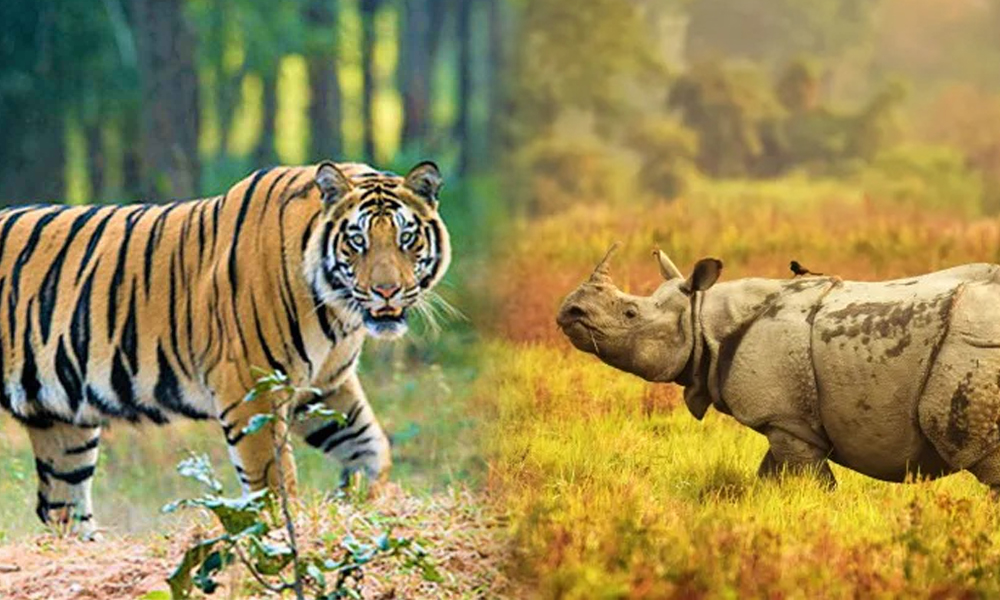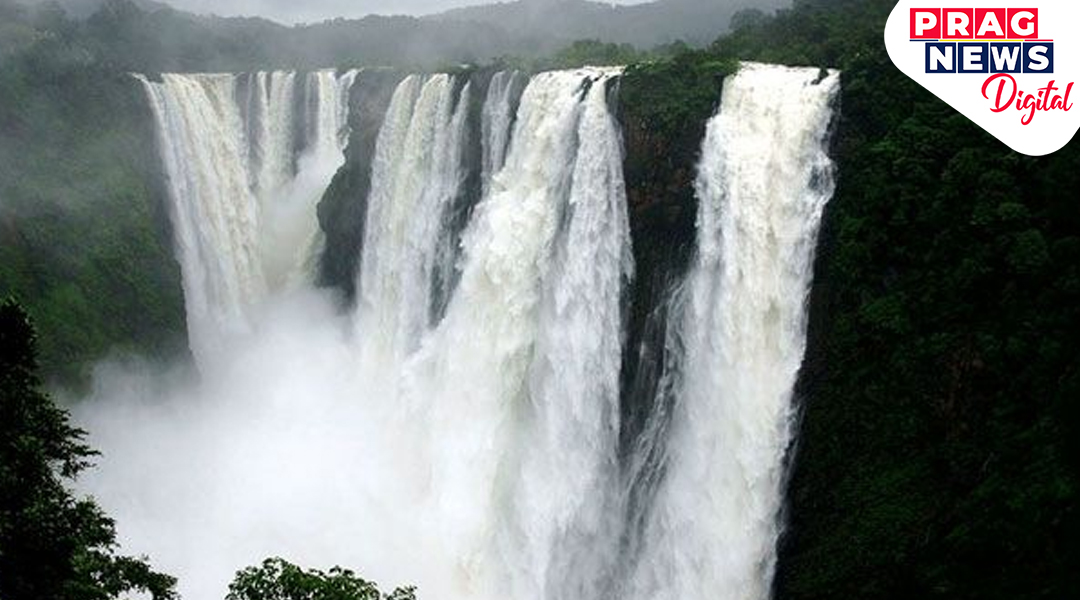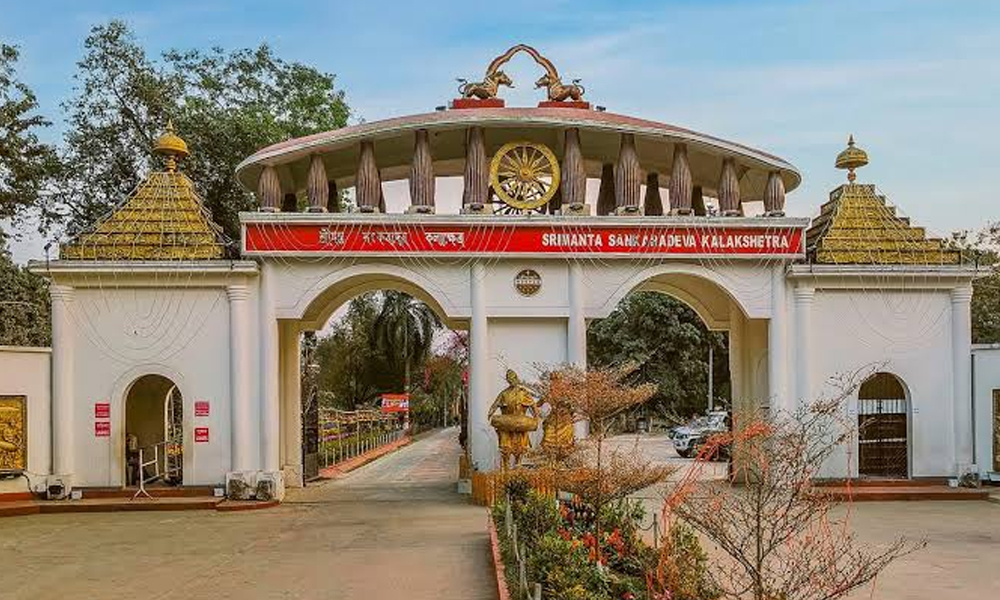Digital Desk: Amidst the northeastern region of India, Assam stands out as one of the most captivating destination renowned for its natural wonders and cultural richness. It is the largest northeastern state in terms of population and second in terms of area. A significant geographical aspect of Assam is that it encompasses three of India’s six physiographic divisions- The northern Himalayas, the Northern plains, and Deccan Plateau. Besides this, it is also a home to stunning array of national parks, which offer visitors a chance to experience the unique flora and fauna of the region. Let us journey through Assam’s breathtaking national parks and explore its biodiversity and cultural significance.
Kaziranga National Park
In 1974, the Kaziranga National Park was designated as a National Park, situating on the banks of the Brahmaputra River and lying between the Brahmaputra River and the Karbi Hills. Along with being one of the last unmodified natural areas in the northeastern region of India, it is also the largest national park in Assam, covering 42,996 hectares. This magnificent place has been declared a UNESCO world heritage site in 1985 and is recognised as an Important Bird Area by the Birdlife International.
The ‘Big Five’ species – The Great One Horned Rhino, Asian Elephant, Royal Bengal Tiger, Asiatic Water Buffalo, and Swamp Deer, as well as numerous mammals, such as panthers, samba deer, hog deer, sloth bears, gaur, capped langur, and hoolock gibbon, and hundreds of birds are the primary attractions of Kaziranga National Park. It harbours more than 60% of India’s wild buffalo population along with the only population of the Eastern Swamp deer and Seven species of turtle and tortoises.
Kaziranga is the habitat of 25 globally threatened and 21 Near threatened species of birds. Some of the prominent migratory birds found here are – Lesser White Fronted Goose, Ferruginous duck, Baer’s Pochard Duck and lesser Adjutant, Greater Adjutant, Black necked stork, and Asian openbill stork.
Manas National Park
In the state of Assam, Manas national Park is nestled on the foothills of Himalayas. The name of the park is originated from the Manas river. The river is a major tributary of Brahmaputra river, which passes through the heart of the national park. The beautiful park earlier known as North Kamrup wildlife sanctuary is spread over an area of 519.77 sq km and was declared as a sanctuary on December 01, 1928. It was established as the core of Manas Tiger Reserve from April 1973 and elevated to the position of a national park status on September 7, 1990. It earned the badge of UNESCO World Heritage Site in 1988 and is the first tiger reserve in Assam and the fifth in India. Under the Man and Biosphere Programme of UNESCO, Manas National Park was deemed as Manas biosphere reserve in 1989.
The Manas National park harbours more than 22 endangered species which is designated as Schedule 1 species in the wildlife protection act and enjoy the highest level of protection. In total, there are nearly 60 mammal species, 42 reptile species, 7 amphibians and 500 species of birds. The fauna of the sanctuary include Indian elephants, Indian Rhinoceros, gaurs, wild water buffaloes, barasingha, Bengal tigers, Indian leopard, clouded leopards, asian golden cats, jungle cat, leopard cat, fishing cat, marbled cat, dholes, golden jackal, capped langurs, golden langurs, Assamese macaques, rhesus macaque, gray langur, slow loris, hoolock gibbons , smooth coated otters, sloth bears, barking deer, hog deer, sambar deer, and chitals. Additionally, the parks hosts more than 450 species of birds including Pelicans, storks, eagles, ibis , hornbills, parrot bills, and parakeets. It has the largest population of endangered Bengal florican and is also the habitat of other critically endangered species such as the White bellied heron, slender billed vulture, white rumped vulture and King vulture.
Dibru- Saikhowa National Park
Dibru- Saikhowa is a national park as well as a biosphere reserve situated in the south bank of the river Brahmaputra in the extreme east of Assam state in India. Dibru- Saikhowa, with an area of 340 sq km, is among the most vibrant wildness on earth. In 1997, Dibru Saikhowa national park was declared as India’s ninth biosphere reserve, among the 18 existing sanctuary and 13 years later, it was declared as a national park in 1999. The park is located between the Brahmaputra and Dibru rivers in Assam, at a height of 118 metres above sea level. The annual rainfall of the park ranges from 220 to 380 centimetres. The forest type of Dibru- Saikhowa comprises of semi- evergreen forests, deciduous forests, littoral and swamp forests and patches of wet evergreen forests.
The Dibru- Saikhowa National Park is a home to several rare and endangered species. It hosts 36 mammal species, of which 12 are listed in Schedule 1 of the Wildlife (Protection) Act 1972. Although the National Park was mainly established to protect the rare white winged wood ducks in their natural environment, it is also known for its brightly coloured wild bourses known as feral horses. Bengal Tiger, Indian leopard, Clouded leopard, Jungle Cat, sloth bear, Dhole, Small Indian Civet, Malayan Giant Squirrel, Chinese Pangolin, Gangetic Dolphin, Slow loris, Pig Tailed macaque, Assamese macaque, Rhesus macaque, Capped langur, Hoolock gibbon, Asian elephant, wild boar, Samba deer, Hog deer and Asiatic Water buffalo are among the rare and endangered species that can be found in this Sanctuary. More than 300 different species of birds can be found in this beautiful park, including the Greater Adjutant stork, lesser adjutant stork, Griffon Vulture, Osprey, Crested Serpent Eagle, Spot billed pelican, white winged duck, Baer’s pochard, Greater spotted eagle, Bengal florican, pale capped pigeon, great pied hornbill, March babbler, Jerdon’s Babbler and black breasted parrotbill.
Nameri National Park
The Nameri National park, located in the foothills of the eastern Himalayas in the Sonitpur District of Assam, about 35 km from Tezpur. It shares it northern boundary with the Pakhui Wildlife Sanctuary of Arunachal Pradesh. Together they constitute an area of over 1,000 km, of which Nameri has a total area of 200 km. The park was declared a reserve forest on 17 October 1978 and was set up as a national sanctuary on 18 September 1985 with an Area of 137 Km as a part of Naduar Forest Reserve. Another 75 km was added to this park on 15 November 1998 when it was a officially established as a National Park. It is the Second tiger reserve of Assam after Manas Tiger Reserve.
Nameri National Park is home to some of the endangered species and so far more than 30 mammalian species have been recorded in this national park. Some of the prominent species are Asian Elephants, gaurs, sambars, barking deer, leopard, clouded leopards and wild dogs. The rich and diverse birdlife of Nameri National Park includes over 384 species including the endangered white winged wood duck, Ibisbill, great wreathed and Rufous Necked hornbills, white checked partridge, oriental hobby, Pallas, Grey headed, lesser fist eagles and many more. The national park also harbours over 600 floral species. Some notable species are Gmelina arborea, Michelia Champaca, Amoora wallichi, Chukrasia Tabularis, Ajar, Urium Poma, bhelu, Agaru, Rudraksha, Bonjolokia, hatipolia Akhakan, Hollock and Nahor.
Orang National Park
Orang National Park is the oldest game reserve of the state just on the northern bank of River Brahmaputra and is an important breeding ground for varieties of Fishes. It lies within the district of Darrang and Sonitpur with Pachnoi river, belsiri river and dhansiri river bordering the park. It is spread across an area of 79 sq. km and is known as the smallest national park of Assam. The national park is often referred to as the ‘Mini Kaziranga’ due to its resemblance with the landscape of the Kaziranga National Park. It was established as a sanctuary in 1985 and declared a national park on 13 April in 1999.
The Orang National park contains significant number fauna species. Other than the Great Indian one horned rhinoceros, which is the dominant species of the national park, the other important species are the Royal Bengal Tigers, Asiatic elephants, Pygmy hog, Hog deer and wild boar. Other species which were reported are the blind Gangetic dolphin, Indian pangolin, rhesus macaque, Bengal porcupine, Indian fox, small Indian civet, otter, leopard cat, fishing cat and jungle cat. The park has also recorded 222 bird species, some of which are – spot billed pelican, great white pelican, black necked stork, greater adjutant stork, lesser adjutant stork, ruddy shelduck, gadwall and Pallas’s fish eagle. Among reptiles, seven species of of turtle and tortoise are found in this National Park.
Dehing Patkai National Park
The Dehing Patkai National Park is considered to be the Amazon of the East and is the longest stretch of lowland rainforests in India. It is located in the Dibrugarh and Tinsukia Districts of Assam and covers an area of 231.65 km of rainforest. The park is adjacent to the Namdapha Wildlife sanctuary nestled at the foothills of the majestic Patkai hill ranges along the serene banks of the River Dehing. At first, the Dehing Patkai National Park was established as the Dehing Patkai Wildlife Sanctuary, later it was designated as the Dehing Patkai elephant reserve as part of Project elephant. It was declared a wildlife sanctuary on 13 June 2004, and on 13 December 2020, the government of Assam upgraded it into a national park. The forest department of Assam officially notified it as a national park on 9 June 2021.
The Dehing Patkai National Park has recorded nearly 50 mammal species, 47 reptile species and 310 butterfly species. The hoolock gibbon found in this park is the only species of non- human ape found in India. The hoolock gibbon is critically endangered and relies on this rainforest as one of its last remaining natural habitat. Other noteworthy mammals found in the park includes Chinese pangolin, dhole, Himalayan black bear, Malayan sun bear, crab eating mongoose, small toothed palm civet, binturong, jungle cat, leopard cat, Asian golden cat , marbled cat, Bengal tiger, leopard , clouded leopard, Asian elephant, gaur, red serow, sambar and barking deer. This national park is also a haven for a remarkable variety of bird species totalling 293.
Raimona National Park
Named after the historical capital of Bijni estate, Raimona, the park was declared on June 5, 2021, by the Chief Minister of Assam on the Occasion of World Environment day. The national park is located at the Kokrajhar district of Assam and the area covering the forest reserve of Raimona National Park is around 422 sq. km and it is under the Bodoland Territorial Council of Assam. It forms a natural boundary with the Sankosh River on the West and it is also the interstate boundary of Assam and West Bengal. The Saral Bhangna River forms a natural border of the Raimona national park in the East and southern boundary is formed by the Pekua river.
The Raimona National Park is renowned for being home to the endangered golden langur. The golden langur is designated as the mascot of Bodoland Territorial Region (BTR). It is also inhabitant by various other species such as elephant, Bengal tiger, leopard, clouded leopard, Asian golden cat, mongoose, jungle cat and hog deer. Additionally, there are at least 227 bird species in the park, with two critically endangered and seven globally threatened. Other important bird species found in this national park include white bellied heron, swamp francolin, pheasant, grey peacock pheasant, Indian peafowl, oriental darter, lesser adjutant, collared falconet, slender billed vulture, white backed vulture, besra, black baza, jerdon’s baza, osprey and Bengal florican. The national park also harbours 380 varieties of plants and orchids.
Sikhna Jwhwlao National Park
Sikhna Jwhwlao national park is a newly established national park in Assam and is situated in the Bodoland Territorial Region (BTR), adjacent to the eastern part of Raimona National Park, across the Saralbhanga River. It encompasses parts of the Chirang and Kokrajhar district, covering an area of 316.29 sq. km. It is part of of the Manas biosphere reserve and serves as a crucial ecological corridor connecting four other protected areas. The government of Assam formally approved the creation of the national park during a Cabinet meeting held on 16 February 2025. It was officially notified as a national park by the Governor of Assam on 5 March 2025, under the provisions of the wildlife (protection) act, 1972.
The Sikhna Jwhwlao national park is home to more than 460 species of butterflies and serves as a habitat for several rare protected species, including the golden langur, one horned rhinoceros, Royal Bengal tiger, and Asian elephant. The park, with its geographic and ecological similarities with Raimona National park, is home to a rich range of Avian fauna. While no formal avian survey has been conducted in the Sikhna Jwhwlao National park yet, the transboundary migration of birds between this park and Raimona suggests that similar species are found here as well. Additionally, due to its unique geographical location and geology, the park encompasses as many as twelve different types and sub types of forests.
Conclusion
The national parks of Assam are living museums of ecological balance and cultural history in addition to being wildlife sanctuaries. They are living proof of the government’s effort to protect the flora and fauna of Assam. Protecting these wide variety of flora and fauna has always been the prime objective of the state that resulted in creation of these 8 national parks. These parks has earned the state a distinct reputation of unspoilt natural wonders. The trip through these parks are more than just a journey through wilderness— it is a once in a lifetime opportunity to explore the state’s natural beauty.
























